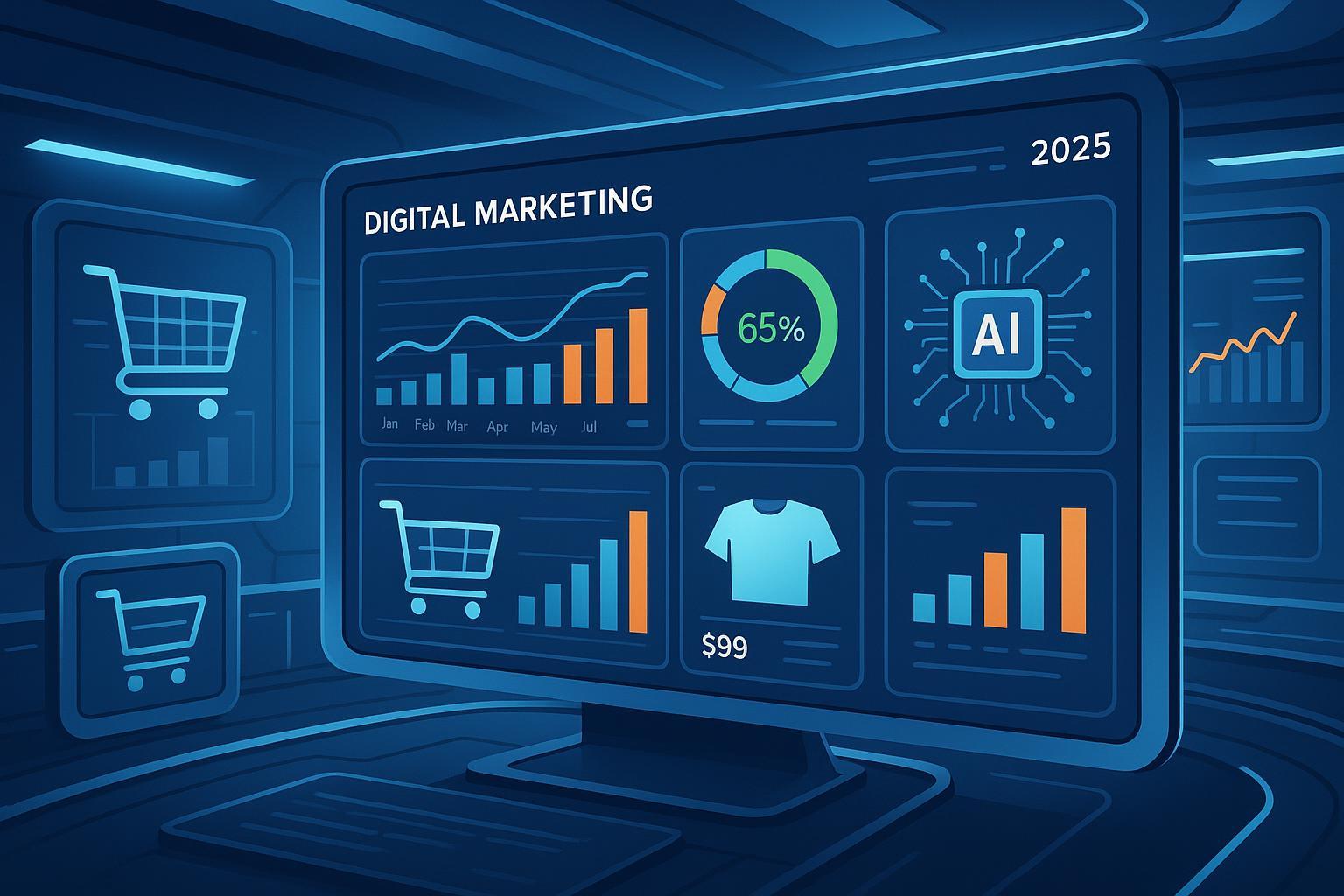Maximizing ROI with Product Listing Ads: Strategies for 2025

Introduction: Why Mastering PLA ROI Is Essential in 2025
Product Listing Ads (PLAs) are at the heart of digital commerce, but their ROI is under siege in 2025—rising CPCs, tougher privacy rules, and rapid automation shifts are challenging even the savviest advertisers. E-commerce leaders know that outdated PLA approaches no longer cut it: leveraging AI-driven automation, real-time product feed optimization, and advanced attribution modeling now define top performers. This guide distills the most actionable, evidence-backed best practices—many missing from the usual advice—so your team can thrive amid fierce competition and platform change.
What’s ahead: You’ll discover 10 advanced, actionable PLA strategies, each mapped to 2025 realities, with workflow diagrams, real data benchmarks, and fresh B2B examples. Harness these to push your ROAS higher, control costs, and future-proof your Shopping ad program.
1. Leverage First-Party Data and Privacy-Forward Audience Targeting
First-party data has become the new competitive edge as third-party cookies disappear. Integrate customer purchase and engagement data via Google Merchant Center Next and ensure your GA4 setup supports full-funnel attribution. Privacy-centric custom audiences now enable hyper-relevant targeting without breaching compliance. How: Sync your CRM/email/SMS data with Merchant Center; use predictive segments and exclusion lists (e.g., past buyers).
Pro Tip: Advanced brands in DTC/retail see up to 50% CPA reductions by layering automated audience exclusions—source.
2. Deploy AI-Driven Product Feed Optimization (and Troubleshoot in Real Time)
Modern Merchant Centers (like Google Merchant Center Next) harness AI to automate error correction, optimize feed attributes, and sync inventory across channels in real time. How: Enable AI-based sync, routinely review feed health, and apply automation rules to titles, images, and inventory.
Table: Key Optimization Levers and Impact
| Attribute | Optimization Focus | Potential Uplift |
|---|---|---|
| Title/Keyword | Insert high intent terms | ↑ CTR (10-20%) |
| Product Image | Clean, lifestyle shots | ↑ Conversion Rate |
| GTIN/ID Completeness | Avoid disapprovals | ↑ Impressions |
| Price/Margin Label | Custom labels for ROAS | ↑ ROI Targeting |
Detailed feed checklist and troubleshooting resource available.
3. Segment Campaigns Using Custom Labels and Margin-Based Structures
Stop treating all SKUs alike. Use custom labels to divide products by profit margin, seasonal trends, or customer value. Run separate campaigns for hero vs. clearance SKUs and allocate budget accordingly. How: Apply custom labels via feed management tools (Feedonomics, Channable); set up campaign splits in Google Ads interface.
Case Example: StoreGrowers reports retailers increasing blended PLA ROAS by >15% after transitioning to margin-segmented campaign structures.
4. Embrace Smart Bidding with Strategic Human Oversight
AI-based Smart Bidding (Target ROAS, Max Conversion Value) outperforms manual bidding—when paired with regular audit and adjustment. Automation finds the right bid per auction, but human direction realigns toward business objectives and market shifts. How: Enable Target ROAS on major campaigns, review bid signals weekly, and intervene with bid adjustments for outlier SKUs or high-priority products.
5. Implement Multi-Channel Attribution and Time-Decay Modeling
Attributing PLA success to the right channel and touchpoint is mandatory in 2025. Move beyond last-click—adopt multi-touch or time-decay attribution, especially if running Shopping ads alongside Paid Social or Retail Media. How: Leverage GA4 and dedicated attribution platforms (e.g., Northbeam, Triple Whale); analyze cross-channel reports monthly.
Data Point: Multi-touch attribution users typically see 10–30% more accurate channel ROI, enabling smarter budget reallocation (TrueProfit.io).
6. Unify Creative Strategy and Brand Consistency Across PLA and Automated Formats
With SERPs now filled by Performance Max and retail placements, creative quality and brand representation are non-negotiable. Invest in high-resolution images, lifestyle photography, consistent price labels, and on-brand promotional text. How: Establish brand creative guidelines; audit all ad creative quarterly; use creative performance reports to iterate.
7. Benchmark Against Market Trends and Competitor Pricing—Continuously
Win the price war and visibility battle by real-time benchmarking. Google’s Competitor Price Intelligence and third-party tools (Semrush, Price2Spy) enable automated market position monitoring. How: Set up regular competitor price tracking and alerting; adjust pricing and promo labels dynamically for key SKUs.
Benchmark Table:
| Metric | Industry Median (2025) |
|---|---|
| CTR | 0.86% |
| CPC | $0.66 |
| Conversion Rate | 1.91% |
| Median ROAS | 3.31x |
Data: Wordstream, StoreGrowers, Varos
8. Systematically Exclude Negative Keywords and Audiences
Negative keywords are still key to filtering waste. With Performance Max and Smart Shopping, use account-level negatives and audience exclusions to prioritize high-value traffic and control spend creep. How: Update negative keyword lists weekly; apply audience exclusions to PMax, especially for returning/cross-shopping audiences.
Solly Baby (Agital) saw a 50% CPA drop after introducing systematic audience exclusions—full case.
9. Test, Audit, and Iterate: SKU-Level A/B Experiments and Routine Account Reviews
Top-performing advertisers standardize on ongoing optimization—setup routine SKU-level split tests (titles, images, offers) and quarterly account audits using formal checklists. How: Use Google Ads Experiments tool; leverage platform audit templates (Shopify).
10. Prepare for the Future: AI, Automation, and Cross-Channel Shopping Convergence
2025 will see further blending of search, social, and retail media Shopping formats—all now driven by AI-powered creative, bidding, and feed automation. Winning teams skill up on emerging tools, cross-team collaboration, and adapting quickly to platform shifts. How: Assign a team lead to monitor platform/product releases quarterly; pilot new features in PMax, Meta ASC+, and Retail Media solutions.
Resource: Download the full PLA Operations Checklist (2025 Edition) for stepwise workflow diagrams and ongoing optimization support.
Conclusion: Turn 2025 Complexity into Competitive PLA Advantage
Executing these strategies will not only boost your immediate PLA ROI, but position your brand for long-term advantage as platforms and privacy standards evolve. Action, iteration, and continued learning will separate leaders from laggards in shopping ad performance.
Ready to dominate PLA in 2025?
- Bookmark this guide
- Download the operational checklist
- Subscribe to authority sources (Search Engine Land, Shopify) for ongoing updates
Implement these best practices now—and watch your PLA investment unlock record-setting returns.

